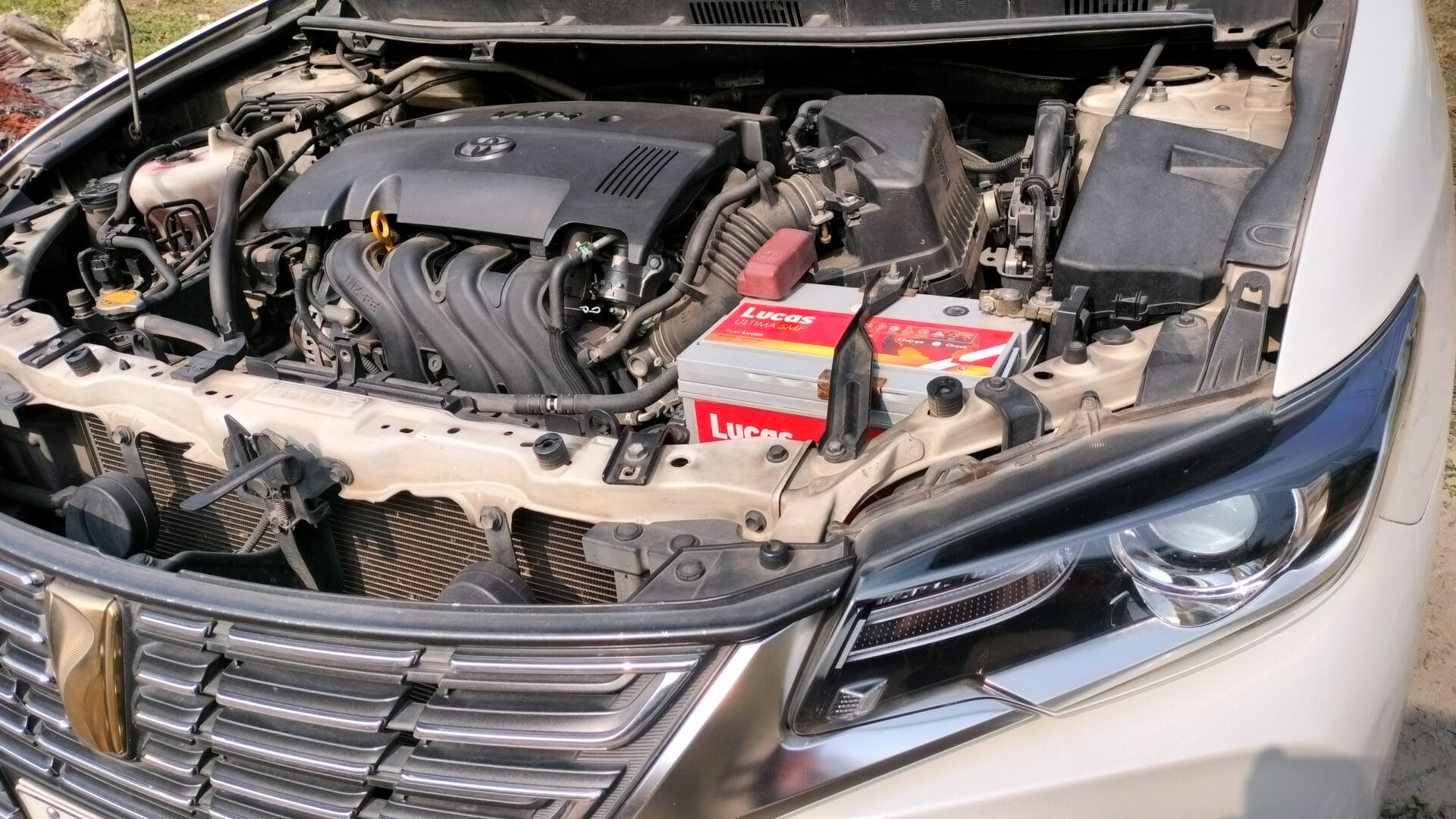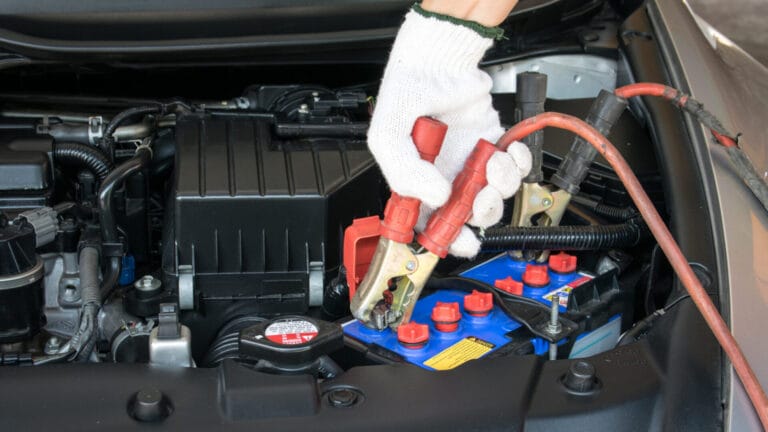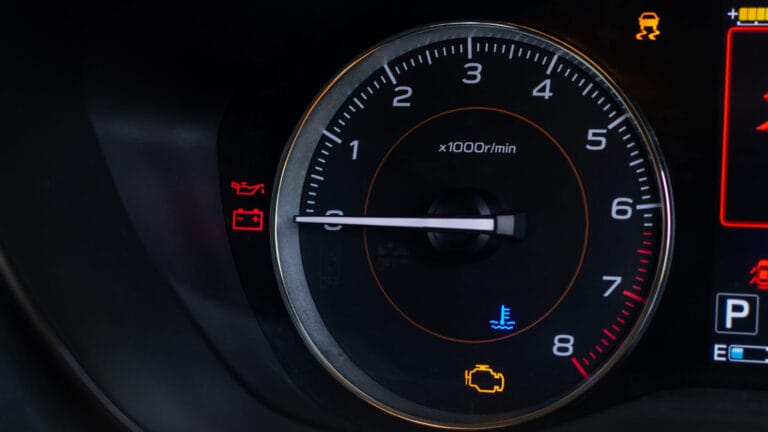Car Battery Voltage Drops When Connected: Is It Normal & What Are the Causes?
If your car battery is fully charged, its voltage should range between 13.5 and 14.5 volts when connected to a load. Unfortunately, sometimes, the voltage may drop by several volts when the car is running.
When it happens, you might wonder what causes the car battery voltage to drop when connected.
One of the reasons you will experience voltage drops after a connection is the battery being weak or old. A faulty alternator or voltage regulator can also cause this problem. Sometimes, it could be due to poor battery connections.
But how do you tell if your battery voltage drops in your car while driving? Read on to find out the signs to watch out for.
Are Car Battery Voltage Drops Normal When Connected?
It is usual for a car battery to experience a temporary voltage drop of 1 to 2 volts when connected to a load. However, the drop usually stabilizes once the alternator takes over the role of supplying electrical power and charges the battery.

You see, as current flows through the battery and your car’s electrical system, there is usually some inherent internal resistance. This resistance is what leads to a temporary voltage drop. However, if the voltage drop is below 11 volts, it is considered a problem.
Signs of Car Battery Voltage Drops When Connected
If you experience voltage drops when the battery is under a load, you will notice several signs pointing to the problem. These include:
- Dimming headlights
- No starts or hard starts
- Malfunction of various electrical systems like power locks and power windows
- Stalling or rough engine operation
- Intermittent electrical problems
- Excessive radio interference or noises in the radio
Reasons for Car Battery Voltage Drops When Connected
If your car battery voltage drops notably when connected to a load, it could be a sign of various issues. Below are possible reasons for such voltage drops.
- Weak or Old Battery
Over time, a weak or old car battery will cause a voltage drop when connected due to its higher internal resistance. This happens as the battery undergoes several charge and discharge cycles.
Similarly, if the battery is old, it will not hold as much charge as a healthy one. This can lead to a reduced electrical power supply and a voltage drop when connected to a load.
Diagnosing the Problem
You can diagnose a weak battery via a load test using a digital multimeter, and here is how to do it:

- Step 1: Connect the multimeter’s positive lead (red) to your battery’s positive terminal.
- Step 2: Hook up the multimeter’s negative lead (black) on the battery’s negative terminal.
- Step 3: Ask someone to turn on the ignition for at least 15 seconds as you watch the multimeter.
- Step 4: If the car battery voltage drops below 9.6 volts, you have a weak battery.
Solution
The best solution to a weak or old battery is to get a replacement. This could cost you between $100 and $250 based on the make and model of your car.
But before replacing it, you should top off its acid and distilled water levels if they are low. Then, charge it to see if it holds charge.
- Faulty Alternator
The alternator charges your car battery while the engine is running. It also provides electrical current flow to all electrical components. If the alternator is faulty, it will not sufficiently charge the battery when connected to a load.
Also, all current flow responsibility will go to the battery. As a result, the battery charge will deplete quickly, leading to a voltage drop.
Diagnosing the Problem
The most effective way to diagnose a bad alternator is to test it using a voltmeter. Here is how to do it:
- Step 1: Start your car engine and confirm that the alternator belt is spinning correctly.
- Step 2: Set the voltmeter to measure DC voltage in the 15-20V range.
- Step 3: Hook the voltmeter’s positive lead to the alternator’s red-colored terminal.
- Step 4: Touch the voltmeter’s negative lead to any metallic part of your vehicle’s frame or the battery’s negative terminal.
- Step 5: Check the reading on the display.
- Step 6: If you get a reading lower than 13 volts, the alternator is faulty.
Solution
A faulty alternator must be replaced to fix your car battery voltage drops. The replacement costs for the alternator alone range from $150 to $800.
To replace the alternator, follow these steps:
- Step 1: Unhook the negative battery cable.
- Step 2: Locate the alternator bolted to the engine’s front side and disconnect the wires fastened to it.
- Step 3: Loosen the tensioner pulley and remove the serpentine belt.
- Step 4: Unscrew the bolts connecting the alternator to the bracket.
- Step 5: Pull out the faulty alternator and install the new one in reverse order.
Here is what an alternator looks like for ease of locating and replacing it:

- Defective Voltage Regulator
In modern vehicles, the voltage regulation for the alternator is handled by a voltage regulator. The regulator helps maintain a stable voltage level for the car’s battery and electrical system.
However, if this component becomes defective, the alternator can end up undercharging the battery. Therefore, once the battery is connected, you will experience voltage drops since it will not be appropriately charged.
Diagnosing the Problem
You will need a digital multimeter to test the voltage of the regulator. This is how you do it:
- Step 1: Set the multimeter at a DC voltage of 20V.
- Step 2: Attach the black probe to your car’s negative battery terminal and the red one to the positive terminal.
- Step 3: Turn on the engine and all the auxiliaries, lights, the radio, and the fan.
- Step 4: Check the battery readings. It should not exceed 14.5 volts. If it is over 14.5 volts, the regulator is defective.
Solution
Once you have confirmed the voltage regulator is faulty, replace it. The replacement cost can be somewhere between $200 and $400. Here is how to go about the replacement:
- Step 1: Remove the negative cable from the battery.
- Step 2: Locate the voltage regulator inside or outside of the alternator.
- Step 3: Depending on your car, you may need to remove the alternator.
- Step 4: Unfasten the screws or bolts holding the regulator in place to the alternator.
- Step 5: Pull out the old regulator and install the new one in reverse order.
Check out this video demonstration of how to do the replacement:
- Bad Battery Connections
Corroded, damaged, or loose battery terminals can result in a poor connection. When this happens, you could experience voltage drops due to increased resistance in your car’s electrical circuit. The drop is usually more noticeable when the battery is connected to heavy loads.
Diagnosing the Problem
Inspect the battery cable for signs of corrosion. Corrosion appears like soft white or green powder.
Next, gently wiggle each cable to check for looseness. They should not move freely. Also, check the cables to see if they are frayed or broken.
Solution
If the battery connections have corrosion build-up, clean them using a wire brush, baking soda, and water solution. Next, use a wrench to tighten any loose battery terminals. However, if the cables are badly rusted or damaged, you should replace them.
FAQs
In this section, we will respond to frequently asked queries regarding the causes of battery voltage drops when connected.
Can I prevent excessive voltage drops in my car battery?
You can take several preventive measures to minimize the occurrence of this problem. This includes keeping the battery terminals clean and inspecting the electrical system regularly.
Can I drive my car if the battery voltage keeps dropping when connected?
Yes, you can. However, it is not advisable to do it for your safety and that of other passengers. This is because the car can stall if the problem is in the alternator. Therefore, you should address the problem immediately.
Can you fix the causes of car battery voltage drops yourself?
Yes. You can even diagnose the problem without the help of a professional mechanic if you have a digital multimeter. All you need to know is what to test using the tool and have the basic mechanical skills.
Conclusion
A car battery’s voltage dropping when connected, starting, or idling is normal as long as the drop is temporary. Sometimes, voltage drops can be excessive or persistent, indicating an underlying issue. Unfortunately, there are many causes of this issue. Therefore, knowing how to diagnose the problem is crucial.
And once you diagnose the problem, you should get it fixed immediately to ensure your vehicle’s reliable performance. The good news? Regular maintenance practices can help minimize the risk of excessive voltage drops.






